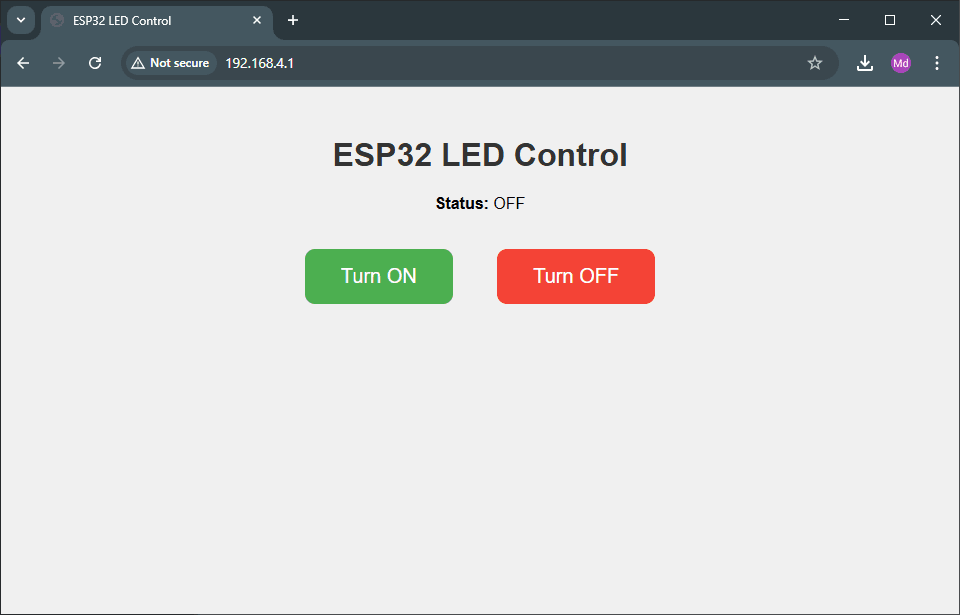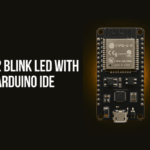Index
Introduction
The ESP32 is a powerful microcontroller with built-in Wi-Fi, making it ideal for IoT, smart devices, and wireless communication. Two of its most essential Wi-Fi operating modes are:
- Station Mode (STA)
- Access Point Mode (AP)
What is Station Mode?
In Station Mode, the ESP32 acts like a Wi-Fi client—it connects to an existing Wi-Fi network, such as your home router or a mobile hotspot. Once connected, the ESP32 can send and receive data through the internet or a local network.
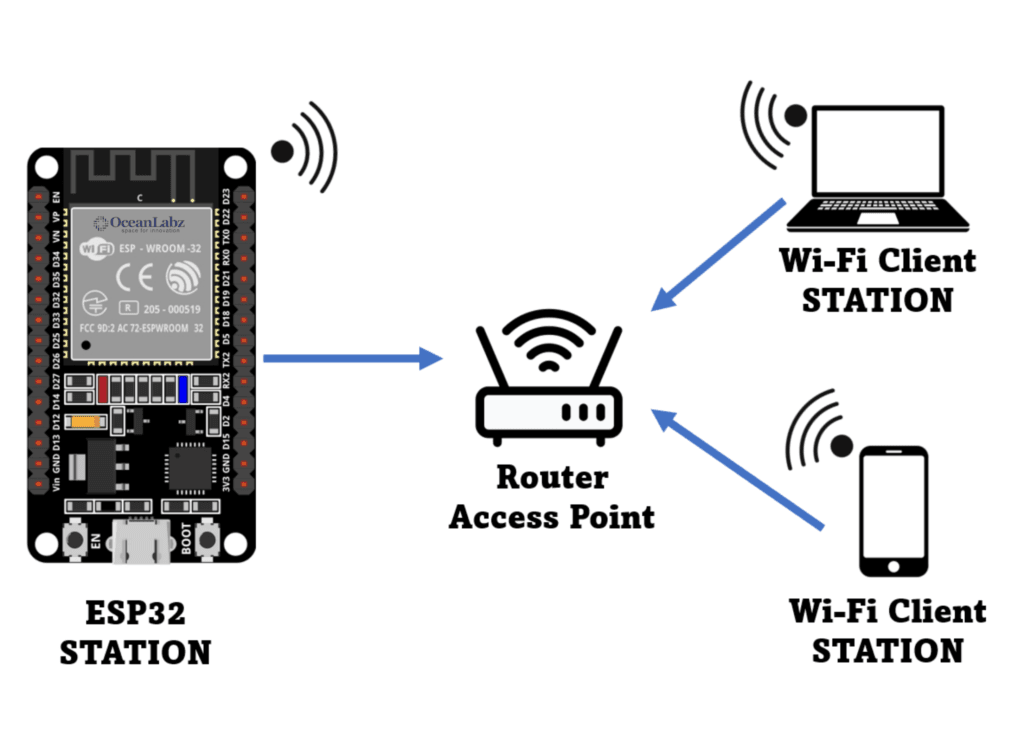
Example Use Cases:
- Sending sensor data to the cloud
- Fetching online weather or time information
- Remote device control via a smartphone app or web dashboard
Code:
#include <WiFi.h>
const char* ssid = "YOUR_SSID";
const char* password = "YOUR_PASSWORD";
void setup() {
Serial.begin(115200);
WiFi.begin(ssid, password);
Serial.print("Connecting to WiFi");
while (WiFi.status() != WL_CONNECTED) {
delay(500);
Serial.print("."); //......
}
Serial.println("\nConnected!");
Serial.print("IP Address: ");
Serial.println(WiFi.localIP());
}
void loop() {
// Nothing here for now
}
What is Access Point Mode?
In Access Point Mode, the ESP32 creates its own Wi-Fi network (hotspot). Devices like phones or laptops can connect directly to the ESP32 without needing a router or internet access. This is useful for local control or configuration when no internet is available.
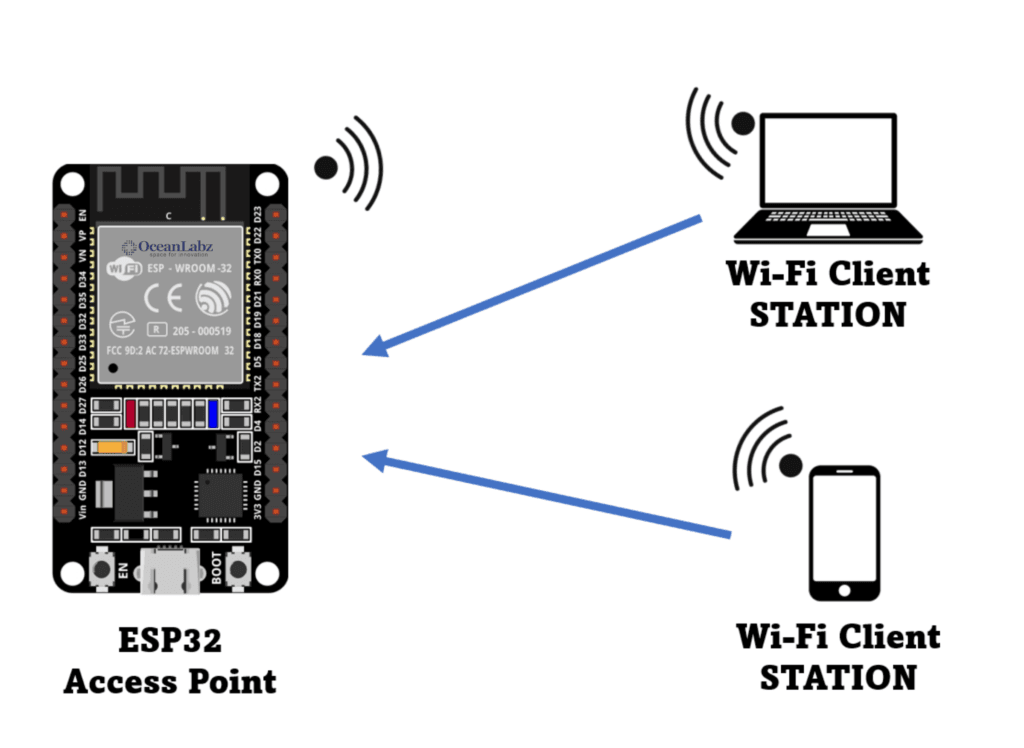
Example Use Cases:
- Offline control of smart devices
- Initial setup/configuration pages
- Peer-to-peer data exchange without the internet
Example Code:
#include <WiFi.h>
const char* AP_SSID = "ESP32_Hotspot";
const char* AP_PASSWORD = "12345678";
void setup() {
Serial.begin(115200);
WiFi.softAP(AP_SSID, AP_PASSWORD);
Serial.println("Access Point started");
Serial.print("IP address: ");
Serial.println(WiFi.softAPIP()); //192.168.4.1
}
void loop() {
// Nothing here yet
}
ESP32 Access Point Mode: Create a Wi-Fi Hotspot to Control an LED
The ESP32 isn’t just capable of connecting to Wi-Fi networks—it can also create its own Wi-Fi network using Access Point (AP) Mode. This allows users to connect to the ESP32 directly without a router and control devices like LEDs via a local web interface.
In this guide, we’ll set up the ESP32 as an Access Point and host a web page that lets you turn an LED on or off from your browser.
Once set up, your ESP32 will:
- Create a Wi-Fi hotspot called “ESP32_Hotspot”
- Serve a simple web page with ON and OFF buttons
- Control an LED connected to GPIO 2 (you can change this pin if needed)
Code
#include <WiFi.h>
#include <WebServer.h>
// Access Point credentials
const char* ssid = "ESP32_Hotspot";
const char* password = "12345678";
// Create web server on port 80
WebServer server(80);
// Define LED pin (GPIO 2 for onboard LED)
const int ledPin = 2;
bool ledState = LOW;
// HTML content to be served
const char* htmlPage = R"rawliteral(
<!DOCTYPE html>
<html>
<head>
<title>ESP32 LED Control</title>
<style>
body { font-family: Arial; text-align: center; margin-top: 50px; }
.button {
padding: 16px 36px; margin: 20px; font-size: 20px;
border: none; border-radius: 10px; cursor: pointer;
}
.on { background-color: #4CAF50; color: white; }
.on:hover { background-color: #45a049; }
.off { background-color: #f44336; color: white; }
.off:hover { background-color: #da190b; }
</style>
</head>
<body>
<h1>ESP32 LED Control</h1>
<p><strong>Status:</strong> <span id="ledStatus">%STATE%</span></p>
<button class="button on" onclick="location.href='/led/on'">Turn ON</button>
<button class="button off" onclick="location.href='/led/off'">Turn OFF</button>
</body>
</html>
)rawliteral";
void handleRoot() {
String html = htmlPage;
html.replace("%STATE%", ledState ? "ON" : "OFF");
server.send(200, "text/html", html);
}
void handleLedOn() {
digitalWrite(ledPin, HIGH);
ledState = true;
handleRoot();
}
void handleLedOff() {
digitalWrite(ledPin, LOW);
ledState = false;
handleRoot();
}
void setup() {
Serial.begin(115200);
pinMode(ledPin, OUTPUT);
digitalWrite(ledPin, ledState);
// Start Access Point
WiFi.softAP(ssid, password);
Serial.println("Access Point Started");
Serial.print("IP address: ");
Serial.println(WiFi.softAPIP());
// Define routes
server.on("/", handleRoot);
server.on("/led/on", handleLedOn);
server.on("/led/off", handleLedOff);
server.begin();
}
void loop() {
server.handleClient();
}
How to Use It
- Upload the code to your ESP32.
- Open the Serial Monitor at 115200 baud to view the IP address.
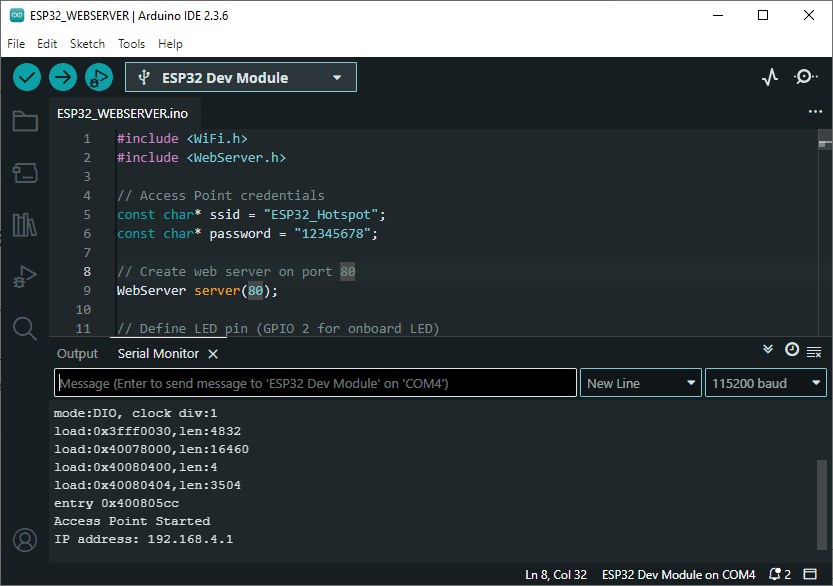
Connect your phone or laptop to the Wi-Fi named ESP32_Hotspot using password 12345678.
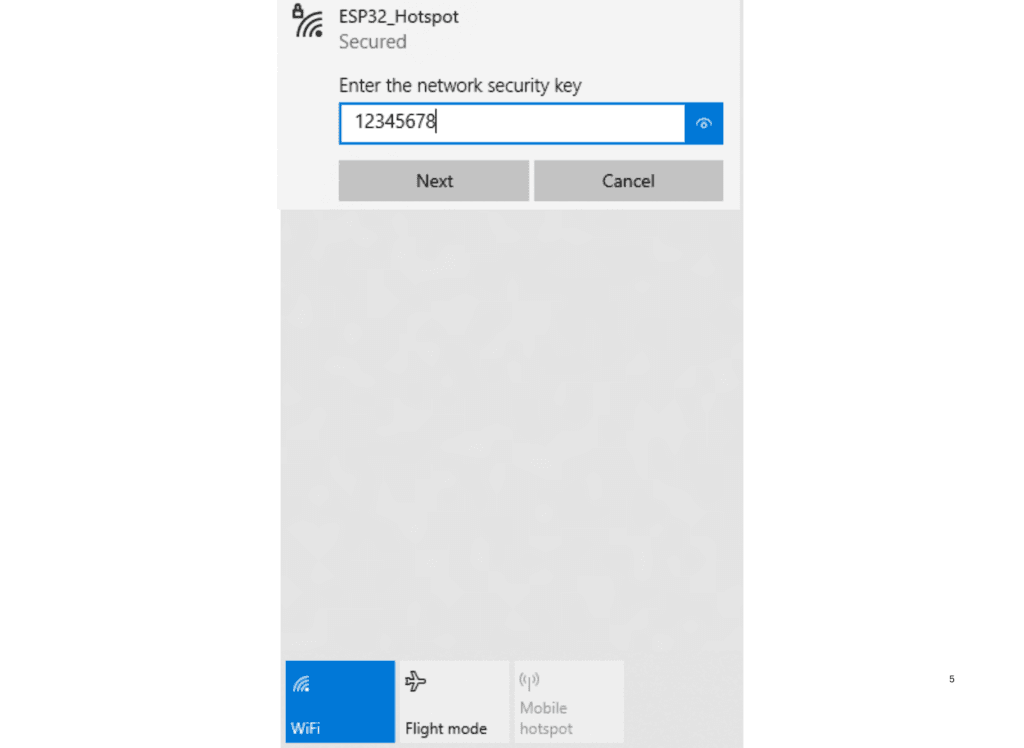
- Open a browser and enter the IP address from Serial Monitor (e.g.,
192.168.4.1). - Use the buttons to turn the LED ON or OFF!
